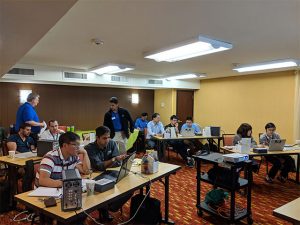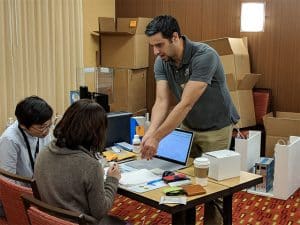Last week was an extremely busy, but very productive week at Pine Research Instrumentation. Not only was the ACS Boston meeting last week, but several of our international distributors visited our facility in Durham, NC for 3 days of technical training. We are proud of our high-quality instrumentation and excellent customer service and after this past week’s training, we feel very confident in our representative’s ability to troubleshoot Pine Research Instrumentation and support our customers from around the world.

Training with international distributors on electrochemical impedance spectroscopy (EIS) using WaveDriver 200 bipotentiostat
We covered a variety of technical subjects such as electrochemical impedance spectroscopy (EIS) with our new WaveDriver 200 bipotentiostat with EIS, rotating ring-disk electrochemistry on our WaveVortex 10 rotator, and UV/Vis spectroelectrochemistry with our integrated spectroelectrochemical analysis system. Additionally, we provided our representatives with skills to address the most common technical support issues Pine Research has experienced over the years. Not only was this an opportunity for the representatives to learn from us, but we had a chance to learn about what challenges they face and how best to address these challenges. Problems that are uncommon in the United States might be very common in France or Singapore and customer expectations differ from region to region around the world.

Dr. Neil Spinner explaining our rotating disk electrodes to our representatives from Singapore and Japan.
Several of the representatives who attended the training are scientists we had not yet met in person. Our 2018 International Training Event provided the opportunity for us to meet our representatives and resellers in person – from both business and social perspectives. This not only helps us develop a better relationship with our representatives but also helps us build confidence and trust in them when it comes to representing Pine Research overseas. After spending 3 days with representatives from China, Japan, Korea, Singapore and Europe, we feel confident in their ability to provide you with the level of customer service expected by Pine Research.

